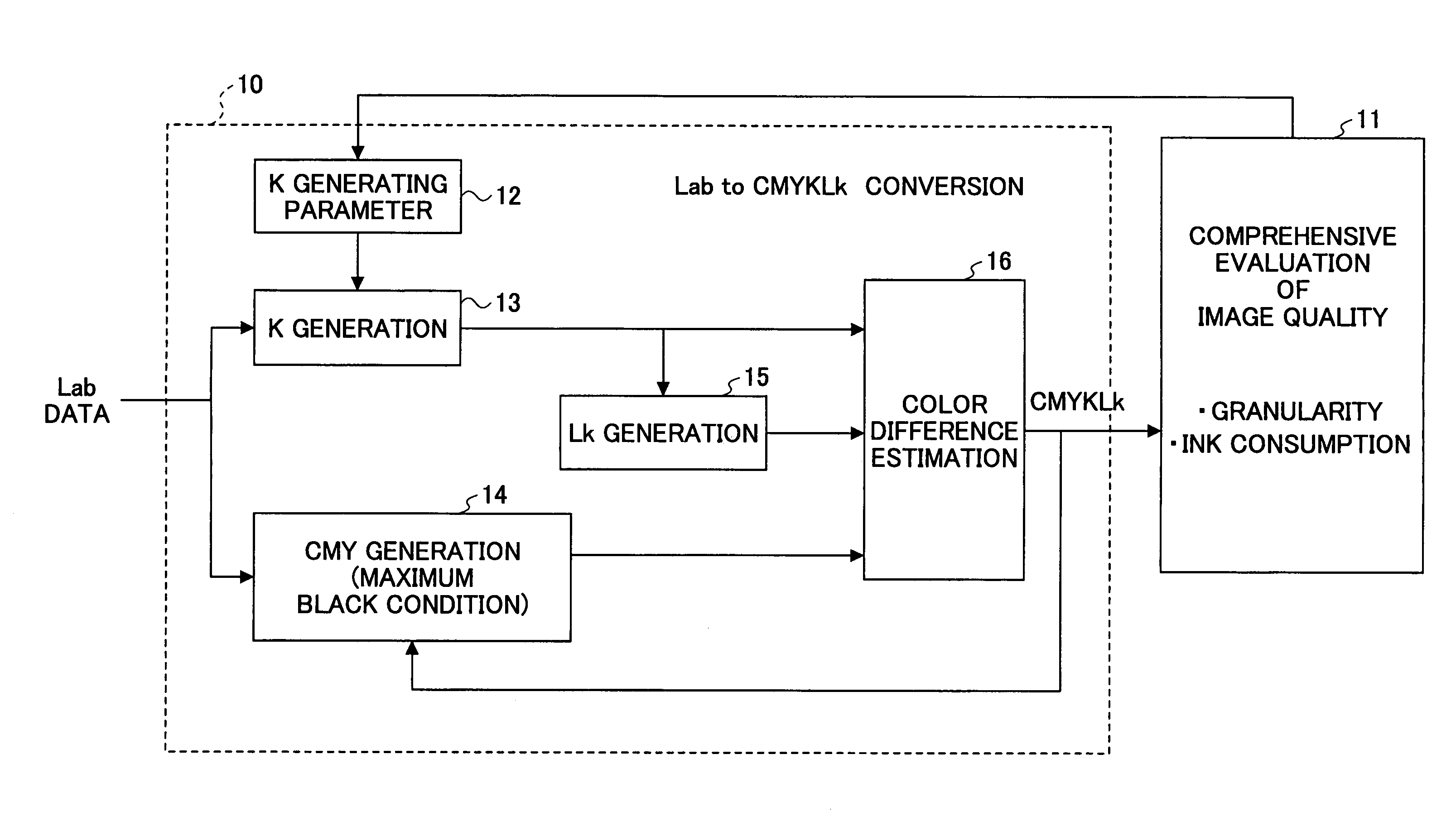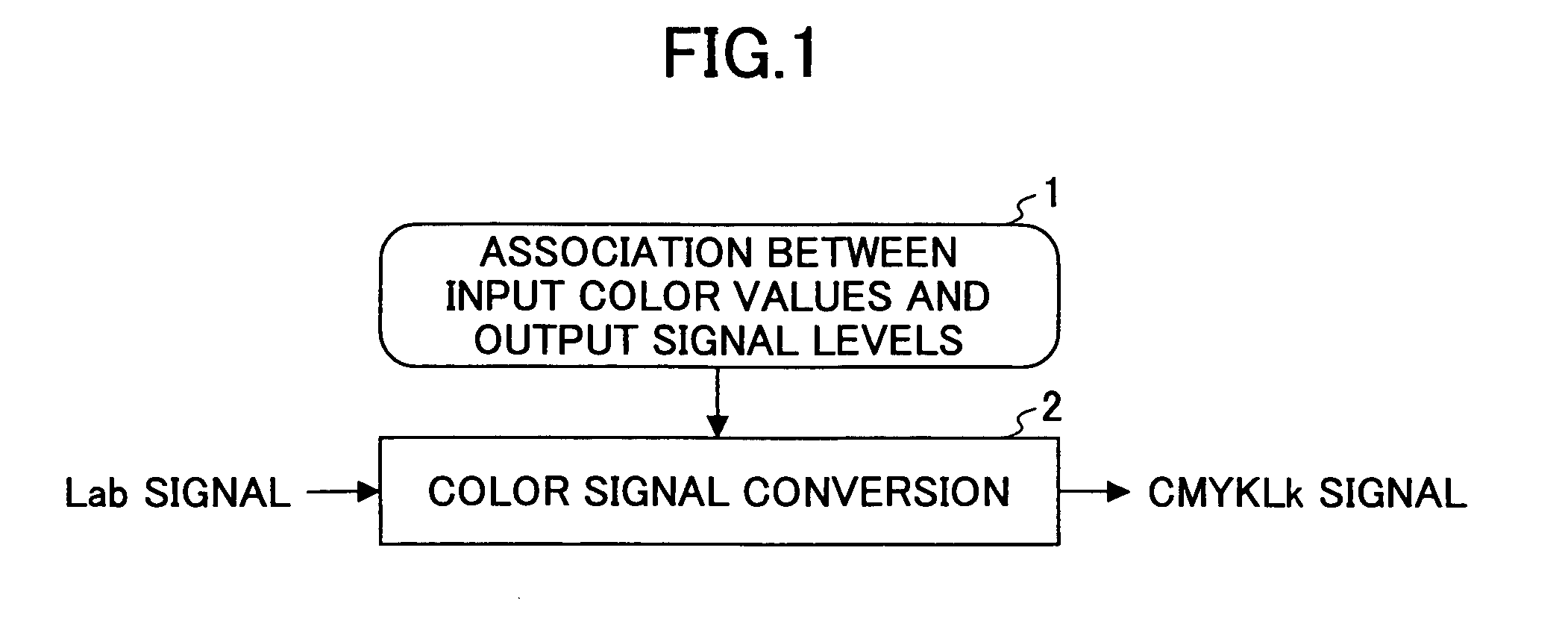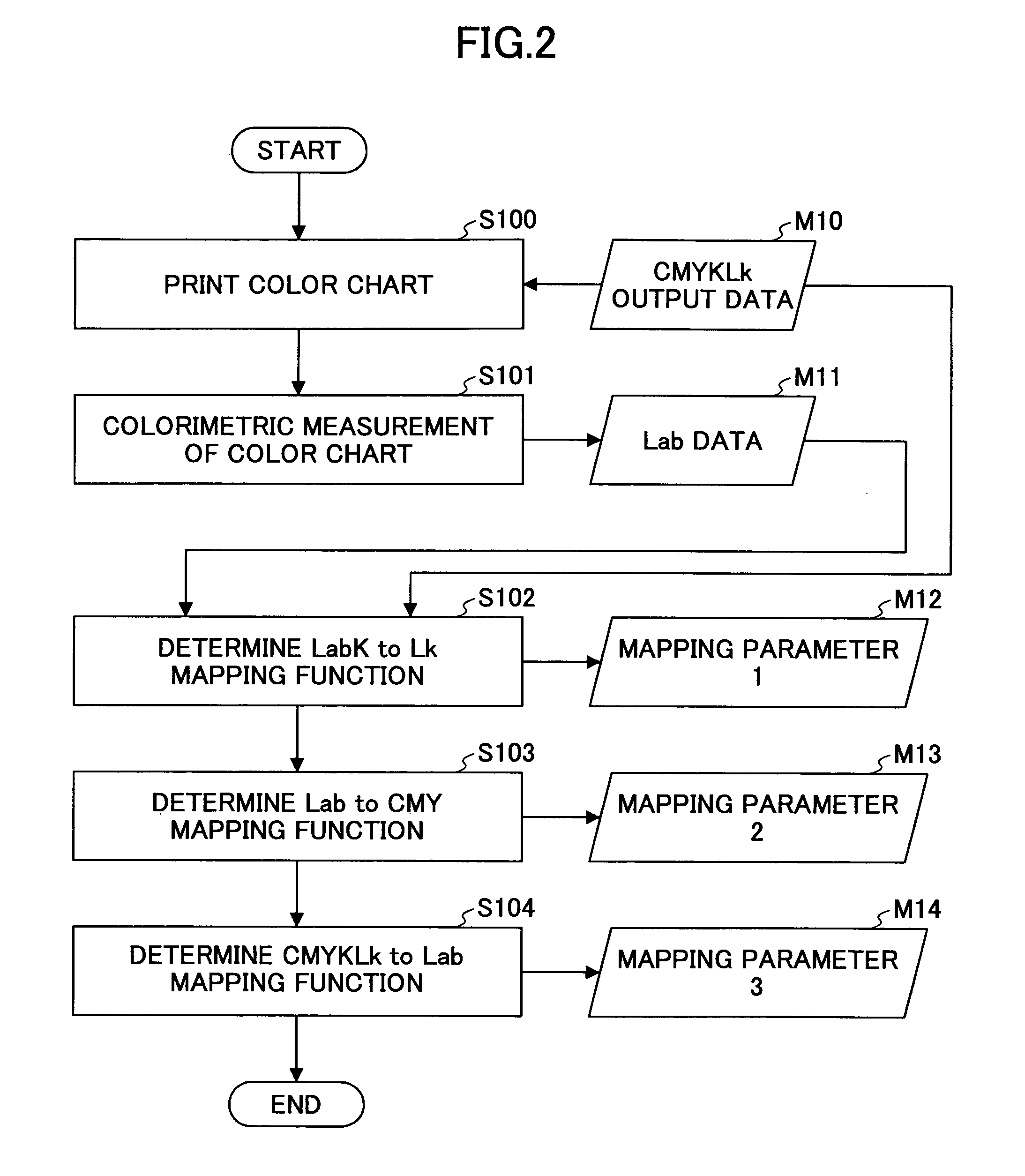Color signal processing and color profile creation for color image reproduction
a color signal and color image technology, applied in the direction of digitally marking record carriers, visual presentation using printers, instruments, etc., can solve the problems of narrow color reproducible range, inconvenient color separation, and inconvenient color separation
- Summary
- Abstract
- Description
- Claims
- Application Information
AI Technical Summary
Benefits of technology
Problems solved by technology
Method used
Image
Examples
example 1
1. Explanation of Basic Concept
[0062]First, explanation is made of the basic idea of embodiments of the present invention. When converting a Lab input signal set to a CMYKLk output signal set, an infinite number of solutions exist because of 3-input 5-output converting system. Therefore, one possible method is determining a K-version output signal by other means, and then converting a LabK set into a CMYLk set. Since this conversion is based on a 4-input 4-output converting system, it appears that a single solution may be determined. However, in reality, multiple CMYLk signal sets exist corresponding to the same LabK signal set, and therefore, a solution cannot be determined.
[0063]For example, consideration is made of an achromatic highlight color (L=80, a=0, and b=0). Such an achromatic highlight color can be reproduced by only light black ink, or alternatively, it can be reproduced by mixture of three colors of CMY or mixture of four colors of light black and CMY. In these pattern...
example 2
[0087]Although in Example 1 a light black output level Lk is estimated from black output level K, a black output level K may be estimated from light black output level Lk. In this case, a LabLk to K mapping function, a Lab to CMY mapping function, and a CMYKLk to Lab mapping functions are determined. These mapping functions are determined by establishing a neural network using the colorimetric data of the color samples satisfying the maximum black condition, as in Example 1. When converting the input Lab signal, a light black output signal Lk is determined first, according to a Lk-version generating parameter. The light black output signal Lk can be generated by setting the starting point and the saturation point of the light black ink along the achromatic color axis in each of the basic six color phases, as in the black generation described in Example 1.
[0088]Then, a black ink output level K is calculated using the established LabLk to K mapping function. Then, the CMY output signa...
example 3
[0089]In Example 3, the black generating function is optimized based on the image quality evaluation. In Examples 1 and 2, a black output level K or a light black output level Lk is determined using a predetermined mapping function. However, in order to fully take advantage of the light black characteristic, black and light black generating functions should be optimized taking the granularity and / or ink consumption into account. Accordingly, optimization of the black generating function based on image quality evaluation is explained below.
[0090]When generating a CMYKLk output signal from Lab values, the output CMYLKk levels are determined by considering not only colorimetric agreement, but also image quality and ink consumption. For a highlight area in which granularity is noticeable, use of black ink is reduced as much as possible. In contrast, for a shadow area in which granularity is not noticeable, black ink is used so as to reduce the total amount of ink consumption. For exampl...
PUM
| Property | Measurement | Unit |
|---|---|---|
| color | aaaaa | aaaaa |
| chromatic colors | aaaaa | aaaaa |
| processing | aaaaa | aaaaa |
Abstract
Description
Claims
Application Information
 Login to View More
Login to View More - R&D
- Intellectual Property
- Life Sciences
- Materials
- Tech Scout
- Unparalleled Data Quality
- Higher Quality Content
- 60% Fewer Hallucinations
Browse by: Latest US Patents, China's latest patents, Technical Efficacy Thesaurus, Application Domain, Technology Topic, Popular Technical Reports.
© 2025 PatSnap. All rights reserved.Legal|Privacy policy|Modern Slavery Act Transparency Statement|Sitemap|About US| Contact US: help@patsnap.com



